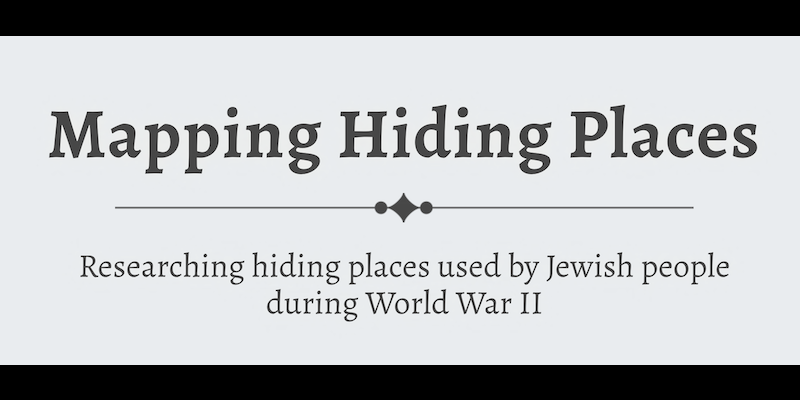The Mapping Hiding Places research project aims to bring, create and deepen knowledge and insight about the histories and legacy of hiding places used by Jews, Roma and Sinti during the Holocaust (Shoah) in Europe. It is an initiative of dr. Dienke Hondius at Vrije Universiteit Amsterdam.
It is an international research project that has started with data collection in Amsterdam and the Netherlands, by students and faculty of Vrije Universiteit Amsterdam, Faculty of Humanities.
The aim of the Mapping Hiding Places project is to increase knowledge and insight in the histories, locations and relations in hiding.The beginning of this research project involves mapping locations that Jews, Roma and Sinti used as hiding places during the occupation. This information is often still kept in the memory of surviving relatives or of survivors, of local eyewitnesses, and in various books, articles, interviews and other sources. Mapping these hiding locations presents an opportunity to gain more insight into histories, memories, networks, trends and legacies of hiding in Europe during the Holocaust.
(Description adapted from information on project website)
Subject Period (epoch)
Subject Continent(s)
Project Language(s)
Project Access
Project Status


The Mapping Hiding Places research project aims to bring, create and deepen knowledge and insight about the histories and legacy of hiding places used by Jews, Roma and Sinti during the Holocaust (Shoah) in Europe. It is an initiative of dr. Dienke Hondius at Vrije Universiteit Amsterdam.
It is an international research project that has started with data collection in Amsterdam and the Netherlands, by students and faculty of Vrije Universiteit Amsterdam, Faculty of Humanities.
The aim of the Mapping Hiding Places project is to increase knowledge and insight in the histories, locations and relations in hiding.The beginning of this research project involves mapping locations that Jews, Roma and Sinti used as hiding places during the occupation. This information is often still kept in the memory of surviving relatives or of survivors, of local eyewitnesses, and in various books, articles, interviews and other sources. Mapping these hiding locations presents an opportunity to gain more insight into histories, memories, networks, trends and legacies of hiding in Europe during the Holocaust.
(Description adapted from information on project website)
